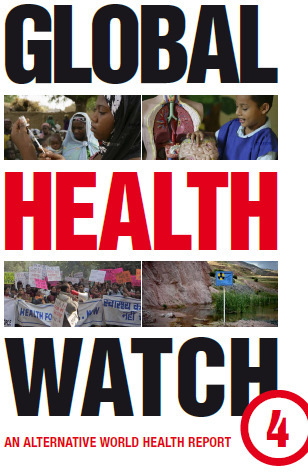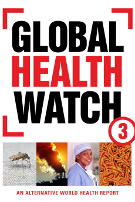International Health Regulations
Background
The IHRs date back to agreements which antedate WHO regarding states' obligations in the event of communicable disease outbreaks. For a full background to the International Sanitary Conventions before the establishment of WHO regulations see The First Ten Years, Chapters 1 & 2, and for an account of the development of the International Sanitary Regulations (ISRs) in 1951 see Chapter 18. See also Fidler, D. P. (2005). "From International Sanitary Conventions to Global Health Security: The New International Health Regulations." Chinese Journal of International Law 4(2): 325-392.
The need for a revision of the ISRs became clear during the 1980s with the emergence of AIDS/HIV and concern about the existing framework for international cooperation. In 1995 the WHA authorised the Secretariat to commence work on a revision of the International Sanitary Regulations and in 1998 a draft was circulated. However, it it was only after the SARS crisis in 2003 that the process was given priority attention and out of this process the new IHRs (2005) emerged. See Fidler and Gostin 2006 for an account of the development of the IHRs. For more about how they work see WHO Topics page on IHRs. (Fidler DP, Gostin LO. (2006). The new International Health Regulations: an historic development for international law and public health. Journal of Law, Medicine & Ethics. 34(1), 85-94)
The IHRs are particularly significant for the future of the WHO. They are one of two 'treaty making powers' that distinguishes WHO from the other foundations, funds and corporates swimming in the over-crowded see of 'global actors' in global health governance. The other base for treaty making is the framework convention as used in the Framework Convention on Tobacco Control.
The IHRs were adopted in 2005 and a formal review in 2010 was foreshadowed at that time.
However, on top of this scheduled review there had been controversy around the WHO's handling of the 2009 N1N1 influenza pandemic (including allegations that WHO over-reacted to the H1N1 pandemic and suggestions that the alleged over-reaction was due to advocacy from the vaccine manufacturers) and so the Review Committee was required to report on that as well as the functioning of the IHRs. The Report of the Review Committee can be found here.
Discussion at WHA64 (May 2011)
Discussion at WHA64 (May 2011) focused on: first, the Secretariat's Report on the 'Implementation of the International Health Regulation (2005)' (A64/9) and second the Report of the Review Committee on the Functioning of the International Health Regulations (2005) in relation to Pandemic (H1N1) 2009 (A64/10).
The Review Committee found no evidence of malfeasance by Secretariat in relation to the management of H1N1 pandemic and no evidence of inappropriate influence from vaccine manufacturers. However, the Review Committee makes a number of very significant criticisms of the Secretariat's management of the H1N1 pandemic (see especially clause 33 of A64/10). The report states that many member states are not prepared for the implementation of the IHRs.
In Committee A the report of the Independent Review Committee was welcomed by most countries participating in the discussion. Recognition of how much work is required to put in place the capacity for implementation in a future pandemic. In light of the recent nuclear accident in Japan many nations also expressed concern that the IHRs do not adequately address nuclear and chemical hazards.
Some comment was made on the proposed delay in the deadline for fully achieved core capacity in all Member States. The review committee had recommended that the deadline for full capacity be extended until 2014 with the possibility of a further extension to 2016. Mexico suggested that the extensions are too long. Samoa commented that the definition used for core capacity was unclear. Some comment on the financial instrument proposed. Bangladesh however welcomed the extended timeline citing the poor progress made since 2005 as justification.
Attention was paid in a few statements to the review committee's recommendation that a global contingency fund should be established to finance low and middle income nation's responses to disease outbreaks. Australia wished to know if the fund was to be actual or virtual. The Bahama's suggested that effort must be made to consider how contributions will be made to the fund, empahasing that those who will most needed the fund will be least able to contribute to it. USA and Canada expressed concerns about the financial implication of the report's recommendations. Mexico supported an investigation into its establishment. Algeria, Brazil and Cameroon voiced support for the proposal. Cameroon further added that they would like to see the fund given an independent 'legal personality'. In response to these comments Dr Fukuda on behalf of the the secretariat recognised the committee's call for 'more details'
During the session numerous ammendments were suggested to the draft resolution. Finally Resolution 64.1 (Implementation of the IHRs) was adopted.
EB130 (Jan 2012)
The EB reviewed the Implementation of the IHRs in Jan 2012 supported by Secretariat document EB130/16. This report details the results of the Secretariat's survey of member state's capacity to implement and a report of WHO's work in support of the implementation.
The shortfalls in the development of capacity were worst in Africa and SouthEast Asia. Globally the capacities relating to 'points of entry' and chemical events were least well developed.
The report of the discussion can be found from page 143 in the summary records. Most of the discussion focused on the shortfalls in member states developing the required core capacities to implement the IHRs.
WHA65 (May 2012)
WHA65 had before it several documents: A65/17, the Secretariat Report (plus A65/17 Corr.1, relating to transposed columns for SEA and EMR in the table), A65/17 Add.1, a more analytical report on the problems being faced in the development of core capacities, and A65/17 Add.2, a draft resolution proposed by the Secretariat, which urges member states to act to develop their core capacities and authorises the Secretariat to support such action.
The report of the discussion is from page 176 of the summary report. Some MSs regretted the delays; some reported on their own achievements; Ethiopia, on behalf of Africa, commented on the expense of developing the required laboratory capacity. The draft resolution was discussed and adopted as amended. See WHA65.23 at page 39 of WHA65 Resolutions and Decisions
WHA66 (May 2013)
The Assembly reviewed implementation of the IHRs supported by A66/16 and A66/16 Add.1 (which updates the table in A66/16). A66/16 provides a systematic review of progress with respect to the implementation of the recommendations of the Review Committee on the IHRs regarding the H1N1 influenza pandemic (A64/10).
The report of the discussion commences at page 3 of PSR 8th meeting Committee A. Long debate. The Committee noted the report.
EB134 (Jan 2014)
The implementation of the IHRs was reviewed by the EB in Jan 2014 on the basis of EB134/32.
This report deals with
- secretariat action regarding Middle East respiratory syndrome coronavirus (MERS-CoV);
- the criteria to be used in the granting of extensions to the target date for full capacity;
- current information regarding implementation of the Regulations by states parties;
- activities undertaken by the Secretariat under the Regulations;
- includng consideration of specific risks posed by yellow fever; in the light of recent recommendations by the Strategic Advisory Group of Experts on immunization, (from page 208)
- a draft resolution to update Annex 7 of the International Health Regulations (2005).
The effect of this recommendation will be that a booster dose for yellow fever is no longer necessary and that protection is assumed to last for life.




